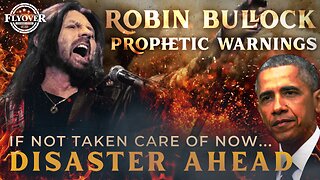Premium Only Content

Accredited Food Allergy Course Level 2 (MODULE 5)
The **Accredited Food Allergy Course Level 2 (Module 5)** typically focuses on critical elements related to managing food allergies in food preparation, service, and handling. Below is an outline of what Module 5 might cover, based on standard food allergy training modules:
---
### **Module 5: Managing Food Allergies in Food Service**
This module emphasizes the practical application of knowledge to prevent allergic reactions in food service settings.
---
### **1. Understanding Food Allergy Risks**
- Overview of food allergens and their potential to cause life-threatening reactions (*e.g., anaphylaxis*).
- Identifying the 14 major allergens recognized under food safety laws (such as the EU FIC regulations or FDA requirements):
- Milk, eggs, peanuts, tree nuts, soy, wheat, fish, shellfish, sesame, and others.
---
### **2. Cross-Contamination Prevention**
- Importance of avoiding cross-contact during food preparation and service.
- Practical steps:
- Clean and sanitize surfaces, utensils, and equipment.
- Use separate storage areas for allergenic and non-allergenic foods.
- Label ingredients and prepared foods clearly.
---
### **3. Food Allergen Communication**
- How to provide accurate allergen information to customers:
- Use allergen charts, menus, or signage.
- Train staff to respond confidently and accurately to allergen inquiries.
- Always double-check recipes and ingredient labels.
- Legal responsibilities: Providing allergen information under food safety regulations.
---
### **4. Safe Food Preparation Practices**
- Procedures to handle allergen-free meals safely:
- Use separate cooking tools and equipment.
- Avoid frying allergenic and non-allergenic foods in the same oil.
- Follow designated prep zones for allergen-free dishes.
---
### **5. Responding to Allergic Reactions**
- Recognizing symptoms of an allergic reaction:
- Mild symptoms: Hives, swelling, or abdominal pain.
- Severe symptoms: Difficulty breathing, chest pain, or loss of consciousness.
- Emergency response procedures:
- Notify the appropriate staff immediately.
- Administer an epinephrine auto-injector if available and trained.
- Call emergency services and provide clear information.
---
### **6. Staff Training and Compliance**
- Regular training for all staff on food allergens and customer communication.
- Importance of documenting allergen management procedures.
- Monitoring compliance with food safety laws and standards.
---
### **Learning Objectives of Module 5**
- Gain confidence in managing allergen risks in food service.
- Prevent cross-contamination and cross-contact.
- Provide accurate allergen information to customers.
- Respond effectively to allergic emergencies.
---
If you’re pursuing this specific course, it’s recommended to review the course materials provided by the accredited organization for detailed insights and certification guidelines.
-
 6:54
6:54
HSESafetyInformation
11 days ago6 Must Try Breakfast recipes By Food Fusion
231 -
 33:56
33:56
The Why Files
9 days agoLegend of the 13 Crystal Skulls | From Mars to the Maya
49.2K37 -
 2:56:14
2:56:14
TimcastIRL
5 hours agoEPSTEIN Files DROP, FBI GOES ROGUE, AG Says They COVERED UP Epstein Case w/Amber Duke | Timcast IRL
166K78 -
 1:39:23
1:39:23
Kim Iversen
6 hours ago"Canada's Trump" Is Trudeau’s Worst Nightmare: Is Maxime Bernier the Future of Canada?
62K69 -
 DVR
DVR
Bannons War Room
10 days agoWarRoom Live
2.66M446 -
 16:06
16:06
The Rubin Report
12 hours agoProof the Islamist Threat in England Can No Longer Be Ignored | Winston Marshall
79K78 -
 2:07:07
2:07:07
Robert Gouveia
9 hours agoFBI Files Coverup! Bondi FURIOUS; SCOTUS Stops Judge; Special Counsel; FBI Does
103K81 -
 56:15
56:15
Candace Show Podcast
10 hours agoBREAKING: My FIRST Prison Phone Call With Harvey Weinstein | Candace Ep 153
162K111 -
 1:56:39
1:56:39
Flyover Conservatives
8 hours agoROBIN D. BULLOCK | Prophetic Warning: 2030 Is Up for Grabs – If We Don’t Act Now, Disaster Awaits! | FOC SHOW
53.1K8 -
 2:13:11
2:13:11
megimu32
6 hours agoON THE SUBJECT: The Epstein List & Disney Channel Original Movies Nostalgia!!
41.6K5